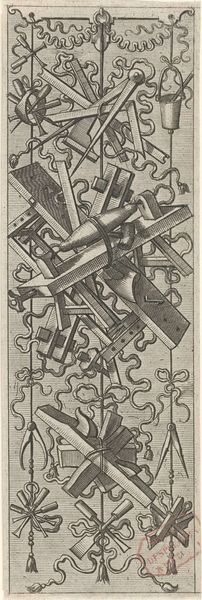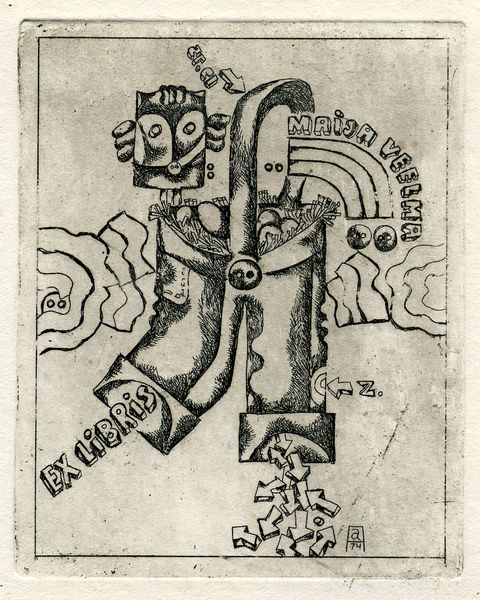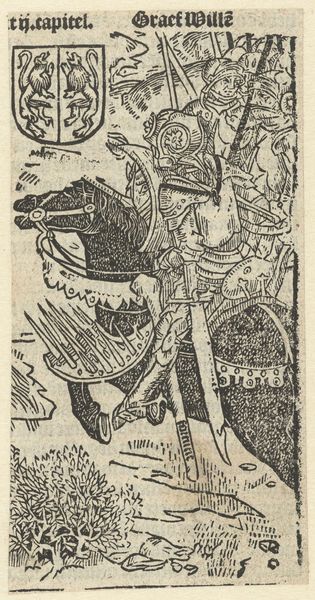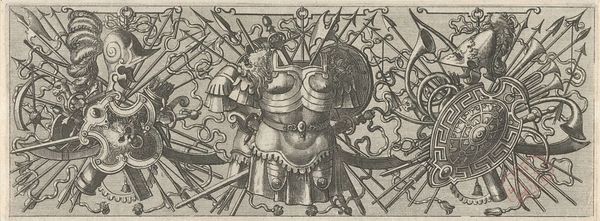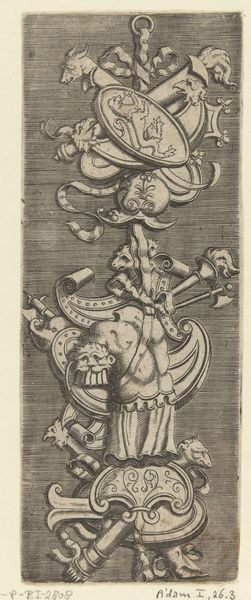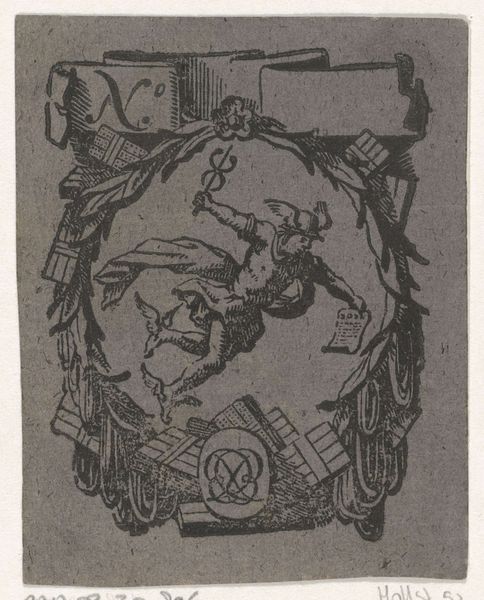
print, engraving
# print
#
11_renaissance
#
northern-renaissance
#
engraving
Dimensions: height 184 mm, width 63 mm
Copyright: Rijks Museum: Open Domain
Curator: My first thought is, wow, what a meticulously constructed still life, yet with such symbolic resonance! Editor: Yes, "Muziekinstrumenten," or Musical Instruments, an engraving made in 1572 by Johannes or Lucas van Doetechum. It’s part of the Rijksmuseum collection. And the way these objects are so meticulously placed must hint at something, right? Curator: Absolutely. I’m immediately struck by how music is visually elevated, not merely represented. The lutes aren't simply lying there; they are interwoven, almost intertwined, suggesting harmony and connection beyond just sound. Consider too the open music books, complete with readable notes. The printing press allowed access and circulation to scores that was once inaccessible to those outside privileged circles. Editor: So you’re suggesting that this print participates in a broader Renaissance cultural movement toward accessible knowledge? That democratization would have had powerful social ramifications! But I'm also interested in how these instruments—particularly the lutes, but also possible shawms—relate to Renaissance ideas about beauty and the cultivation of the self. Curator: Exactly! Music during the Renaissance wasn't just entertainment; it was believed to shape character, evoke emotions, and create social cohesion. This engraving almost acts as a "memento mori" to beauty, reminding us of life’s fleeting pleasures through tangible objects, like musical instruments, bound by a love of learning and the creation of melody and harmonic composition. Editor: The more I look, the more I feel drawn to that cartouche face looking downward. The downward gaze often symbolizes reflection. In conjunction with the other more elevated allegorical characters and the open books of scores, what does that cultural memory bring to light? Curator: It gives weight and awareness, right? Music and sound come down to earth, even to touch, it doesn’t solely stay within the ether of the muses. Editor: Indeed. It is like sound being touched by earthly reflection, grounding heavenly muse. Curator: So next time you’re looking for an evening’s entertainment, perhaps consider, “What sort of social harmonies do you crave in order to strike the proper chord?” Editor: Or remember, music not only shapes sound, but also our shared historical consciousness!
Comments
No comments
Be the first to comment and join the conversation on the ultimate creative platform.






